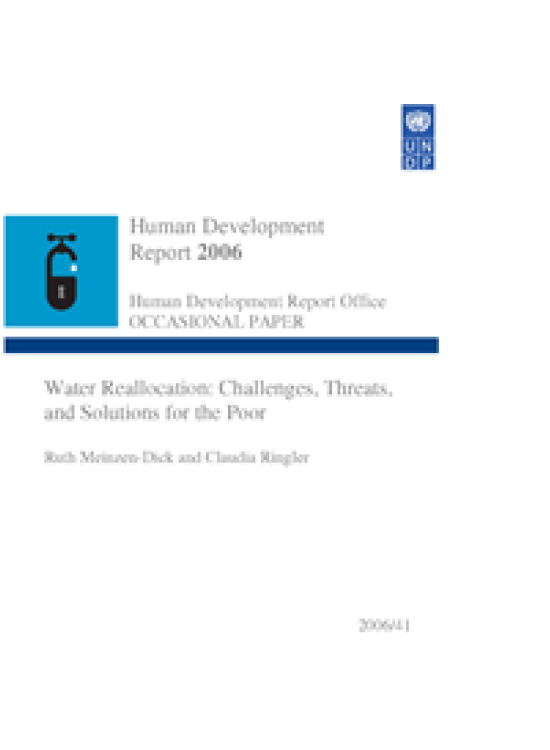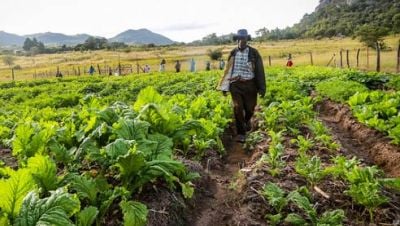Water Reallocation
Challenges, Threats, and Solutions for the Poor

Download Report by Language
Document
meinzen-dickandringler.pdf
(129.55 KB)
Citation
Meinzen-Dick, Ruth, Ringler, Claudia. 2006. Water Reallocation: Challenges, Threats, and Solutions for the Poor. New York.
Water Reallocation
Challenges, Threats, and Solutions for the Poor
Posted on: January 01, 2006
Rapidly growing water demands in the agriculture, industry, and household sectors have led to increasing concerns about a ‘Global Water Crisis’. The main drivers for increasing water demands are growing populations, increasing urbanization, and economic growth, as well as—at higher income levels—calls for increased water allocations to maintain water-based ecosystems. In addition, national-level and global policies and investments, either directly targeting water, or those that affect water availability indirectly, such as agricultural subsidy policies or foreign direct investments in the industrial sector have often contributed to growing demand and reduced supply of water. In the longer term, climate change will be a significant competitor for scarce water resources. While the demand for irrigation continues to increase in many regions, demand for municipal and industrial uses is increasing many times faster. When water uses approach or exceed renewable supplies or developing new water resources becomes increasingly expensive, an increasingly common response to water shortages has been reallocation of water from irrigated agriculture—by far the largest water user—to non-agricultural water uses, principally in urban areas. Such reallocations pose potentially adverse consequences for equity, environmental sustainability, and the livelihoods of the rural poor.

